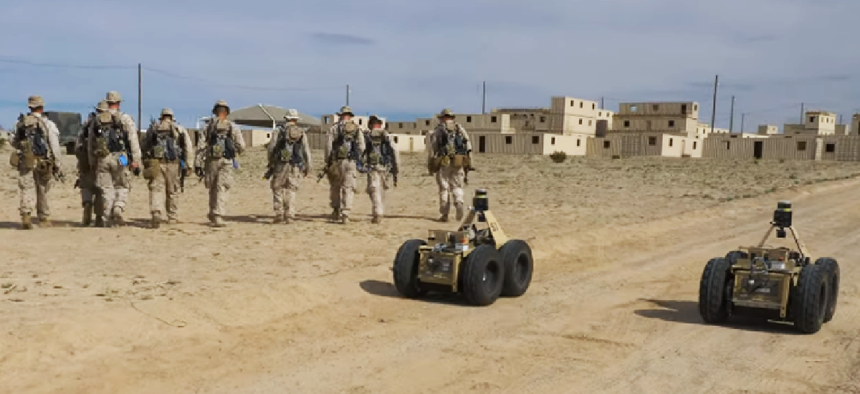Marines test AI, autonomous systems for battlefield intel
The technology allows infantry squads to tap into networked sensors, artificial intelligence and autonomous systems to make better decisions in complex, time-critical combat situations.
The Defense Advanced Research Projects Agency took some of its Squad X equipment to the Marine Corps Air Ground Combat Center in Twentynine Palms, Calif., for a test run.
The Squad X program aims to provide warfighters with lightweight, intuitive technologies they can use on the battlefield, where attacks can come from physical sources as well as the electromagnetic spectrum or the internet. The program uses autonomous systems that combine novel sensing technologies with off-the-shelf tools to increase squads' situational awareness and allow them to expand their area of influence.
The two systems tested focus on manned-unmanned teaming to enhance capabilities for ground units:
CACI’s BITS Electronic Attack Module Squad System is a network of warfighter and unmanned nodes. The Super Node, a sensor-laden, all-terrain vehicle communicates with a small drone and network nodes in backpacks, which stood in for squad members in this test. The backpack nodes collaborate on detecting and geolocating electromagnetic and cyber signals of interest. Artificial intelligence synthesizes and filters the collected data and delivers actionable information to the squad members through handheld devices called Android Tactical Assault Kits (ATAKs) that feature an intuitive user interface.
Lockheed Martin’s Augmented Spectral Situational Awareness and Unaided Localization for Transformative Squads system equips warfighters with vests fitted with sensors. As the Marines moved through the desert and mock city blocks, autonomous rovers and overhead drones carrying electronic surveillance tools, ground radar and camera-based sensing provided reconnaissance of areas ahead of the unit as well as on their flanks. The information was reported to squad members through the ATAKs. Within a few screen taps, squad members accessed options to act on the systems’ findings or adjust the search areas.
The field test of the situational awareness systems gives the Squad X early feedback from users, which will guard against developing a product that either isn’t used or is used improperly.
This article first appeared on GCN, a partner site with Defense Systems.
NEXT STORY: NDAA heads to conference after budget deal






